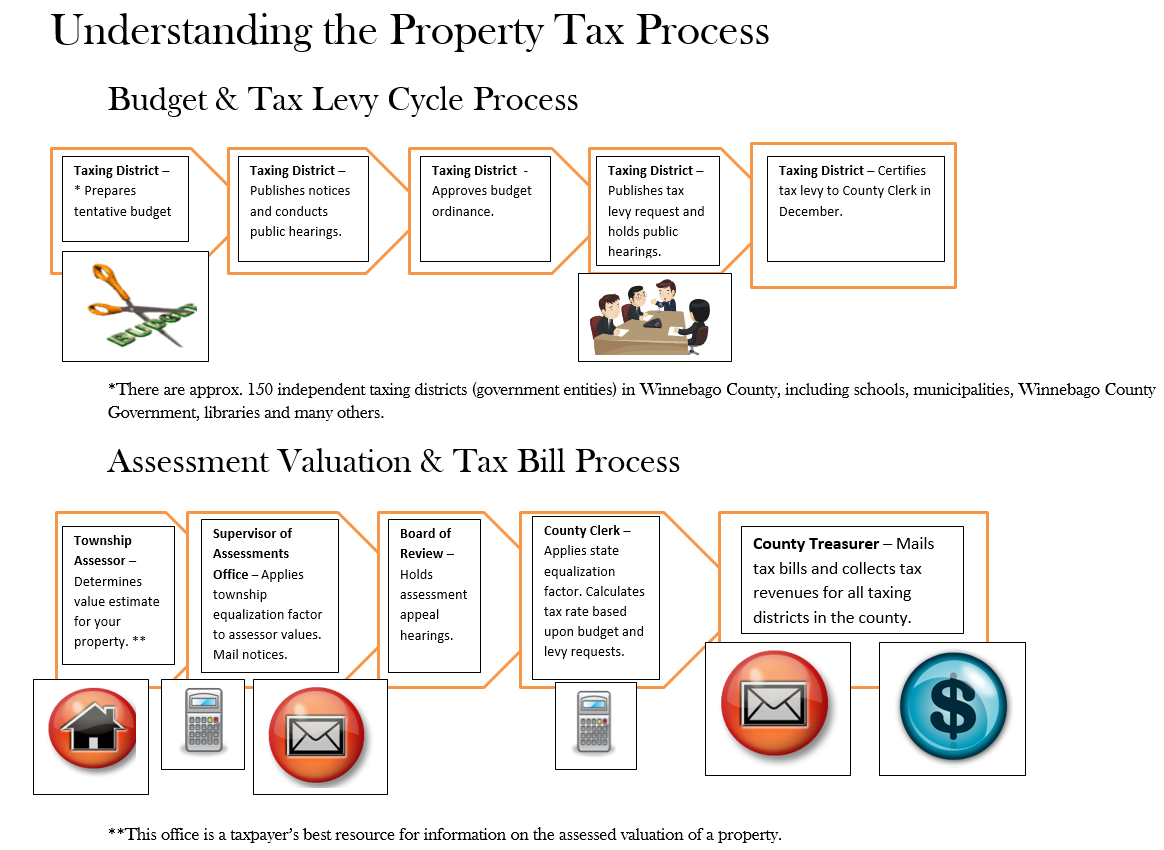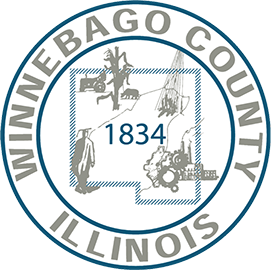Click each section for a brief explanation
Use this form to permanently change your address.
DO NOT DETACH.
This is for your records. If you pay by mail, your canceled check will be your receipt. If you pay in person at a financial institution, bring the whole bill. The receipt will be stamped on back.
The due dates for each of the two installments and the amount due are listed. You may pay half the bill in each of two installments or all of the bill by the first due date.
A legal description of the property is included. It consists of section, lot, township, block and range numbers, and the acreage if available.
The numbers at the top of this box is the parcel ID number or parcel number. Each property is identified by this number. It also has the tax year the bill represents. In Winnebago County we pay a year in the rear. For example: In 2017 you will be paying the 2016 tax bill.
1. The top number is the assessed value as determined by the township assessor and certified to the supervisor of assessments. Next is the assessed value set by the board of review. The amount may be different than the line above because the supervisor of assessments applied a multiplier to all assessments. A multiplier, also called an equalization factor, is used to ensure that assessment levels are similar among townships and counties. The percentage change depends on which township the property is in. For most properties, this value should be 1/3rd of the fair market value on January 1st of the tax year. Farm land assessments are based on productivity. Other changes may have altered the board of review value. If you filed an assessment complaint, the board of review may have lowered the value. If you moved into a newly built home after January1st, this line may include the prorated increase in your assessment under instant assessment laws.
2. It then lists the various exemptions available. Please contact the Supervisor of Assessments for all exemption questions and to sign up for all exemptions. Their number is (815) 319-4460. The taxable value is the amount on which you are expected to pay after all exemptions and multipliers are applied. The tax rate shown is calculated by adding up the tax rates for all the taxing districts for your property. The calculated tax is the amount of taxes you owe, unless you qualify for an abatement. The tax is calculated by dividing the taxable value by $100 and multiplying by the rate. Abatements are decreases or rebates on property in designated areas, such as enterprise zones.
3. The total tax due for most taxpayers is the same as the calculated tax. This is the bottom line – the amount you must pay. This is your township assessor’s phone number to call if you have any questions about your assessment. The treasurer’s office has nothing to do with the amount of taxes owed. Please contact your township assessor to discuss your assessed value of your home. The location of property is the common street address. The last item in the box is your fair market value of property.
This box lists all the taxing districts in which the property is located and compares rates and taxes for the current and previous year.
The first line of the first column shows the taxable value on which taxes were paid last year. To compare it to this year, look at the taxable value shown in the tax calculation section (3) of the bill.
This shows which taxing districts collect taxes for employee pensions and social security. Some districts do not have separate funds but pay employee benefits out of regular operating funds; those districts are not listed.
On the right side of the bill are the detachable barcode sections that must be submitted with your payment. The first payment must be at least half the total due.
Penalties for late payments are 1.5% a month and begin one day after the bill is due.
On the right side of the bill are the detachable barcode sections that must be submitted with your payment.
Penalties for late payments are 1.5% a month and begin one day after the bill is due.





